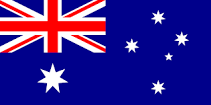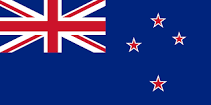Introduced To GKR Students At 2nd kyu (Brown Belt One Black Tip)
Continuing on with the pattern of GKR’s kata curriculum, having spent a good deal of time on Seiunchin (a Naha-te based kata), Empi sees the return to Shuri-te and Tomari-te styled kata. Empi develops similar fighting principles as Bassai-dai, being agility focused and deriving power through explosive straight-line speed. It also trains a student to eliminate telegraphing and introduces sound self-defence techniques highlighted with the multiple hair grabs, knee strikes and groin punches. It also trains a student to develop evasive movements, using them to quickly turn defence into attack.
Perhaps the oldest kata in all karate, Empi came to Okinawa around 1683. No-one knows its actual Chinese name because the Okinawans called it Wansu (or Wanshu), naming it after the Chinese envoy who brought it to the island.
Wansu taught the kata (of the same name) in the city of Tomari and therefore it became part of the Tomari-te system. Being originally Chinese, it is likely the Okinawans were quick to give it a more snappy and direct approach (making it more indigenous to the arts of Okinawa). As with many kata, as the Okinawan Masters passed away, their students went out and taught slightly different versions. The version that Go-Kan-Ryu practises comes from the Shotokan lineage and it is thought that this version was modified from the original by ‘Bushi’ Matsumura, but most likely Yasutune Itosu.
While Okinawan karate-ka still refer to it as Wansu, most styles around the world refer to it as Em-pi which translates to mean ‘The Flying Swallow’ (‘Em’ meaning flying and ‘Pi’ meaning swallow). Gichin Funakoshi (founder of Shotokan) changed the name from Wansu to Empi when he brought the kata to Japan because he felt the up and down swooping movements were a close resemblance to the swooping flight of a swallow. These movements are seen in its numerous techniques where a distinctive jaw strike is followed by the defender grasping the opponent and drawing him inward, simultaneously jumping in and attacking again.
Empi: Summary Points
- One of the oldest kata in all karate.
- Originally called Wansu (named after a Chinese envoy who taught it during the 1600’s).
- Being so old, it is likely it has modified many times from its original format.
- The name was changed to Empi when Gichen Funakoshi (founder of Shotokan) took the kata to Japan.
- ‘Empi’ is made up of two characters, ‘Em’ meaning flying and ‘Pi’ meaning swallow (as in the bird). Funakoshi believed the name was indicative to the up and down swooping movements, similar to that of the swallow.



